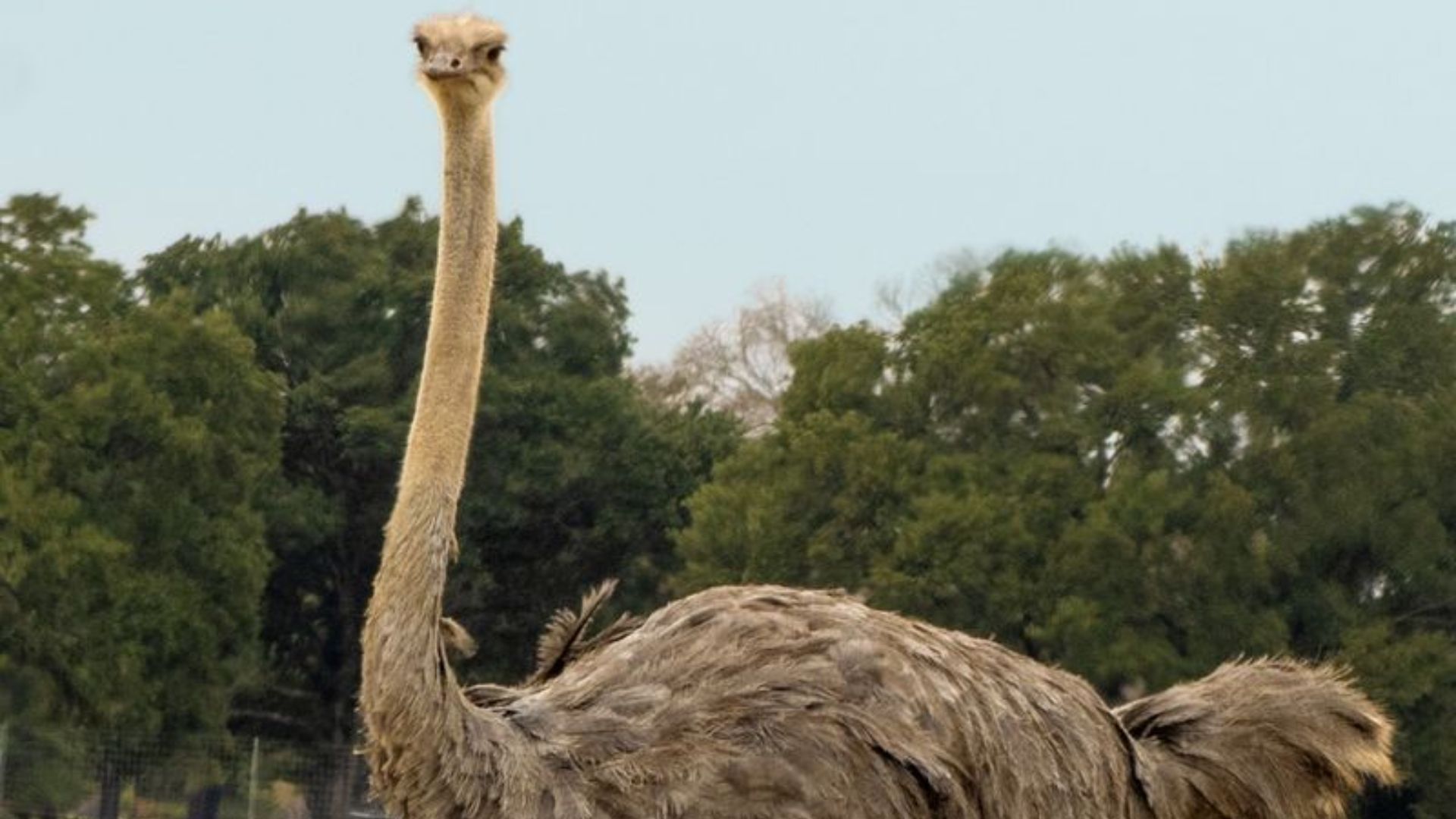Explore the fascinating world of modern-day birds that bear an uncanny resemblance to their prehistoric ancestors, the dinosaurs.
These avian wonders not only captivate with their unique appearances but also offer a glimpse into the evolutionary journey from formidable giants to the avians we see today.
Join us as we explore the distinct characteristics and habitats of these extraordinary birds.
1. Cassowary
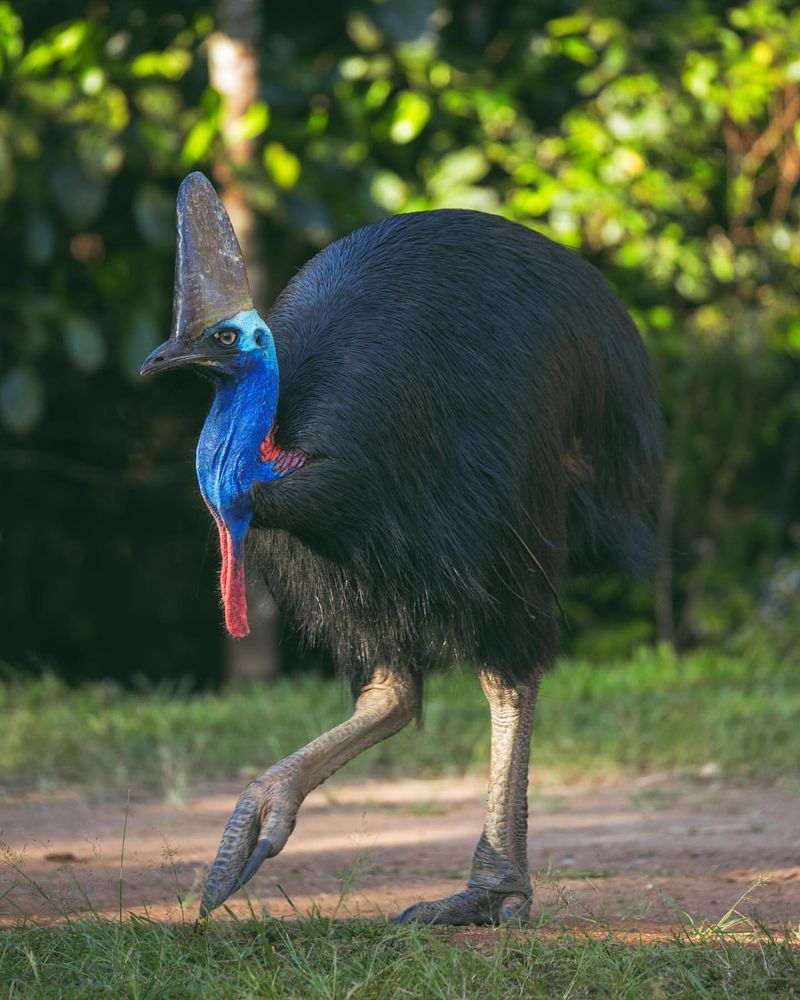
The cassowary is often dubbed the most dangerous bird in the world, a title justified by its striking resemblance to prehistoric creatures. Standing over six feet tall, its most prominent feature is the casque atop its head, reminiscent of a dinosaur’s crest.
This bird, native to the rainforests of New Guinea, Northern Australia, and nearby islands, uses its casque supposedly to fend off underbrush as it forages. Its powerful legs, equipped with dagger-like claws, are its main defense mechanism against threats.
The cassowary’s vivid blue and black plumage, along with its red wattles, add to its dinosaur-like appearance, making it an incredible sight in its natural habitat. Its territorial nature and impressive speed, reaching up to 31 miles per hour, ensure it maintains its space in the dense forest.
A solitary creature, the cassowary is vital to its ecosystem, dispersing seeds over great distances via its fruit-based diet. Despite its fearsome reputation, the cassowary plays a crucial role in maintaining the biodiversity of its habitat.
Conservation efforts are vital as its numbers dwindle due to habitat loss and human encroachment. Seeing a cassowary in the wild is akin to witnessing a living relic of the dinosaur era.
As with any wildlife interaction, it’s recommended to admire from a distance and respect its space to avoid any aggressive encounters.
2. Shoebill Stork
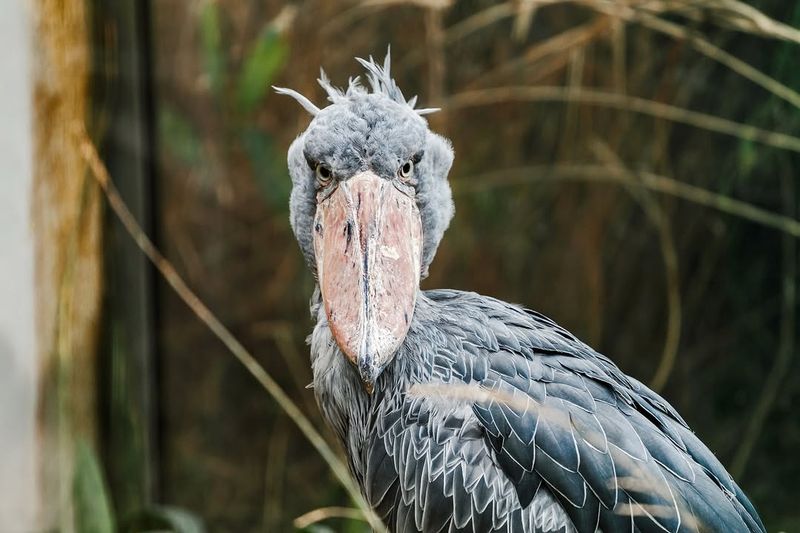
The shoebill stork, often described as prehistoric, boasts a unique and intimidating presence that harks back to ancient times. Found in the swamps of Central and East Africa, this bird’s most distinguishing feature is its massive, shoe-shaped bill, which can grow up to seven inches long.
This formidable tool is used to catch fish, frogs, and even small crocodiles, making it a formidable predator in its habitat. Standing up to five feet tall, the shoebill is a master of stealth, often remaining motionless for hours while hunting.
Its grey plumage and large wingspan add to its dinosaur-like silhouette, making it an imposing figure in the wetlands it inhabits. The shoebill’s piercing yellow eyes give it an intense gaze, further enhancing its prehistoric aura.
Despite its fearsome appearance, the shoebill is a relatively calm and patient hunter, characteristics that are essential for survival in the dense swamp environment. Unfortunately, like many of its prehistoric counterparts, the shoebill faces threats from habitat destruction and the illegal pet trade.
Conservationists continue to work to protect this unique species, ensuring that it remains a part of our world, a living link to the ancient past. Observing a shoebill in the wild is a rare and remarkable experience, offering a glimpse into the world of the dinosaurs.
3. Ostrich
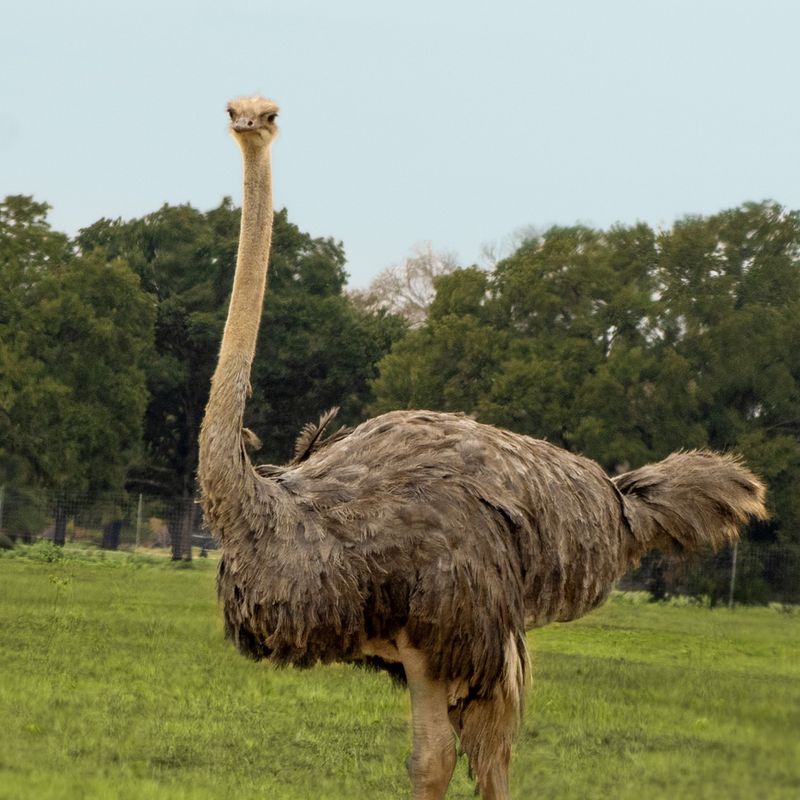
The ostrich, the world’s largest bird, is a quintessential reminder of the dinosaur era with its towering height and powerful build. Native to the savannahs and deserts of Africa, the ostrich can reach up to nine feet in height, making it an impressive figure against the horizon.
Its long neck and legs are key features that contribute to its dinosaur-like appearance, allowing it to run at speeds up to 45 miles per hour. Unlike its flying avian relatives, the ostrich has adapted to life on the ground, utilizing its strong legs not only for swift movement but also as formidable weapons.
When threatened, an ostrich can deliver powerful kicks capable of deterring predators. Despite their size, ostriches have a diet that primarily consists of plants and seeds, occasionally consuming insects and small animals.
Their large, expressive eyes enable them to spot predators from a distance, a crucial adaptation for survival in open habitats. Ostriches also play a significant ecological role, aiding in seed dispersal across the vast landscapes they roam.
While the ostrich’s appearance and traits evoke images of their prehistoric ancestors, they are well-adapted to their modern-day environments. Encountering an ostrich in its natural habitat offers a thrilling connection to the past, showcasing the remarkable endurance of these avian giants through time.
4. Secretary Bird
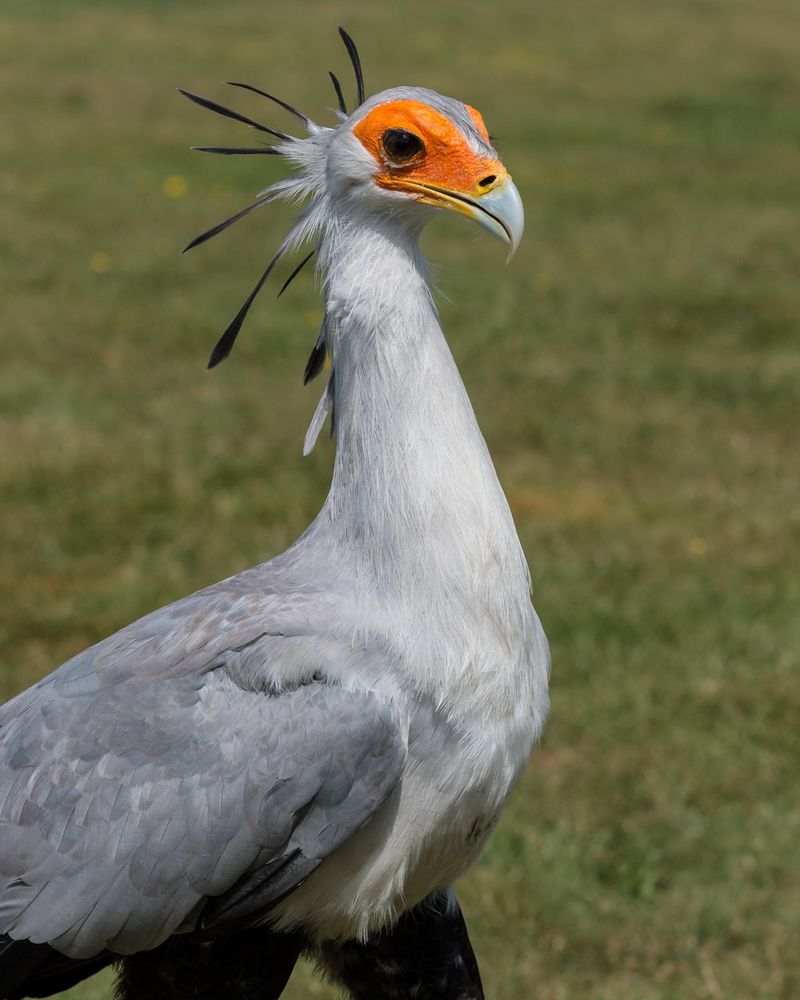
The secretary bird is a unique raptor known for its striking appearance and dinosaur-like features. Native to the open grasslands of sub-Saharan Africa, this bird is easily recognized by its long legs and distinctive head crest, which resemble the elegant yet formidable creatures of the past.
Standing over four feet tall, the secretary bird is an agile hunter, primarily preying on snakes and other reptiles. Its long legs are not just for show; they are highly effective tools for hunting, allowing the bird to deliver powerful, precise kicks to incapacitate its prey.
The secretary bird’s unique hunting style and appearance make it a fascinating subject in the study of bird evolution, showcasing the blend of raptor and terrestrial adaptations.
In addition to its physical prowess, the secretary bird’s striking plumage, which includes a mix of white, black, and grey feathers, adds to its majestic presence in the wild. Conservation efforts are crucial for preserving this species, as habitat loss and human activities pose ongoing threats.
Witnessing a secretary bird in action is a captivating experience, offering insights into the behavior and adaptations that have allowed such a remarkable bird to thrive in its environment, much like its dinosaur predecessors.
5. Pelican
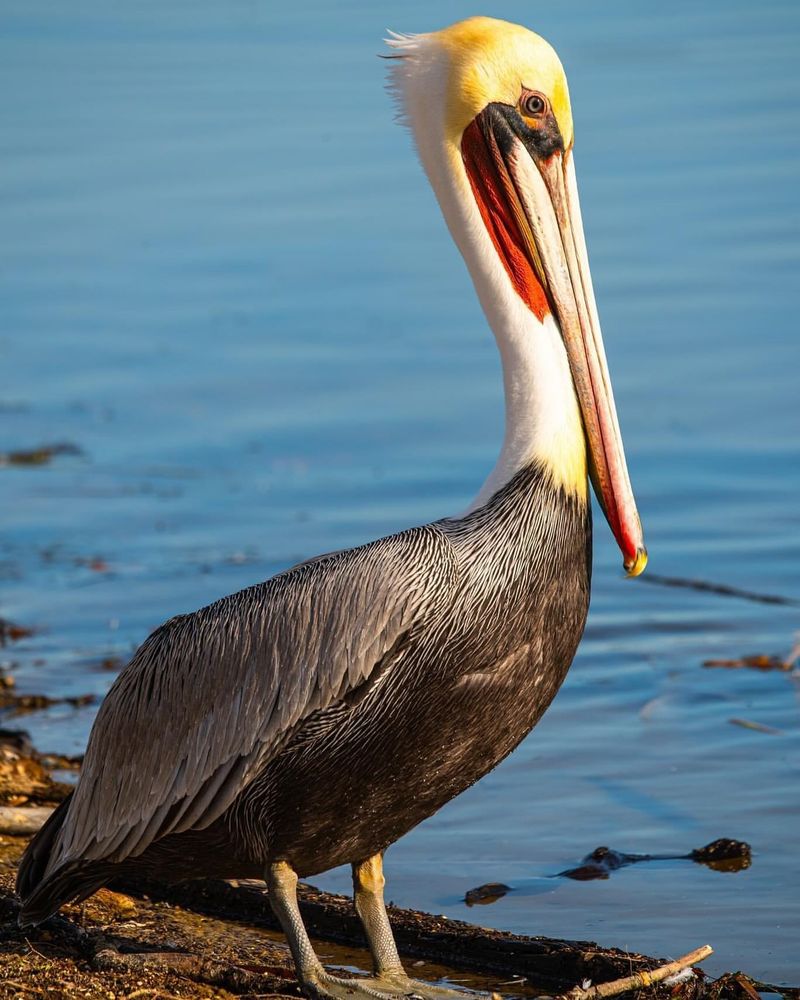
The pelican, with its massive beak and expansive wingspan, is often likened to pterosaurs, the winged reptiles of the dinosaur age. Found in various aquatic environments worldwide, pelicans are renowned for their unique fishing techniques and social behavior.
The most distinctive feature of a pelican is its long beak, equipped with a large throat pouch used to scoop up fish, a skill reminiscent of ancient hunting tactics.
Pelicans are skilled flyers, using their impressive wingspan to glide effortlessly over water bodies, conserving energy during long migrations. Their synchronized flying formations and communal nesting habits highlight the importance of social interactions within their species.
While their feeding habits and behavior are fascinating, pelicans also play a crucial role in their ecosystems, controlling fish populations and aiding in nutrient cycling.
Conservation efforts have focused on protecting pelican habitats from pollution and human interference, ensuring these majestic birds continue to grace our skies.
Observing a pelican in flight or during its unique fishing ritual is an awe-inspiring sight, evoking a sense of connection to the ancient avian lineage that once ruled the prehistoric skies.
With their distinct characteristics and behaviors, pelicans offer a living glimpse into the evolutionary path from dinosaurs to modern birds.
6. Turkey
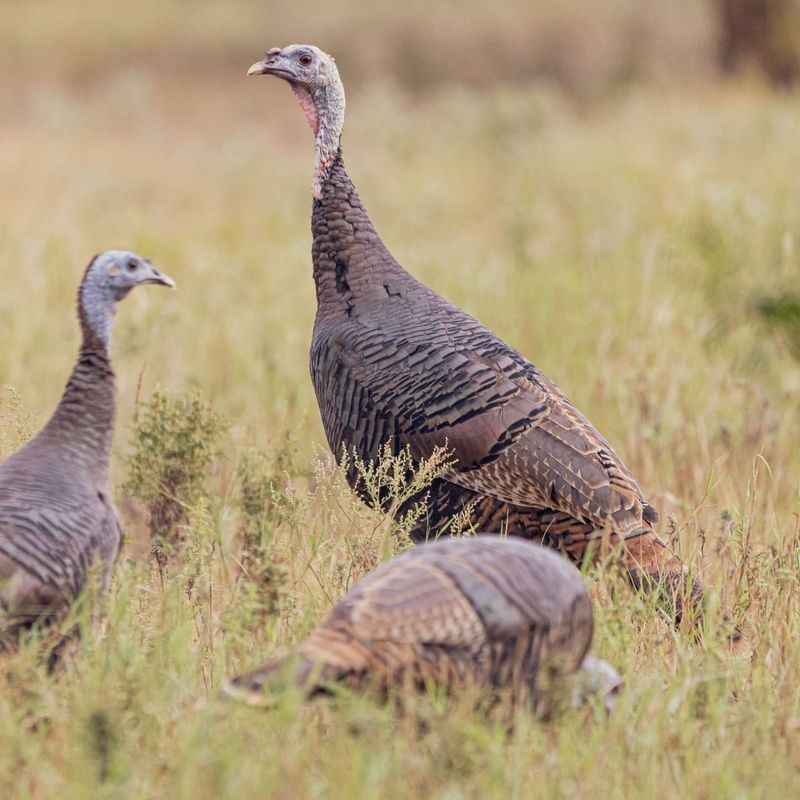
The turkey, often seen as a symbol of North American wildlife, possesses features that subtly mirror its dinosaur ancestry. Native to North America, the wild turkey is a ground-dwelling bird known for its distinctive plumage and vocalizations.
Its bipedal stance and robust body structure are reminiscent of its prehistoric relatives, contributing to its dinosaur-like appearance. Wild turkeys are social creatures, often found in flocks that forage for food in wooded areas and open fields.
Their diet is varied, consisting of seeds, insects, and small reptiles, reflecting a versatile and adaptive feeding strategy.
The male turkey, or tom, is particularly striking during mating displays, fanning its tail feathers and emitting a series of gobbles to attract females, a behavior that echoes ancient courtship rituals.
While domesticated turkeys are widely known, their wild counterparts continue to thrive in their natural habitats, thanks in part to conservation efforts that focus on habitat preservation and sustainable hunting practices.
Encountering a wild turkey in its element is a testament to the enduring legacy of avian species through the ages, offering insights into how these birds have adapted and survived over millennia.
Their presence in the wild serves as a vibrant reminder of the intricate links between modern birds and their dinosaur ancestors.
7. Emu
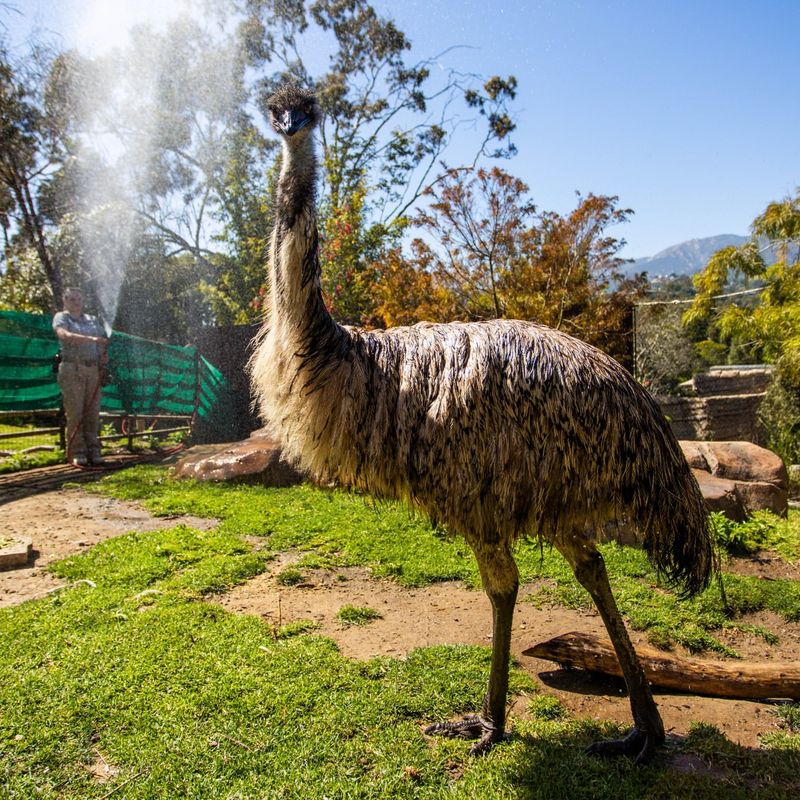
The emu, Australia’s largest bird, is a quintessential example of a modern-day avian that evokes the grandeur of dinosaurs. Standing tall with long legs and a neck to match, the emu’s stature is reminiscent of the bipedal giants that once roamed the earth.
Found across various Australian landscapes, from coastal regions to arid plains, emus are highly adaptable and thrive in diverse environments. Their shaggy brown feathers provide excellent camouflage, blending with the Australian outback’s earthy tones.
Emus are nomadic foragers, covering great distances in search of food, which primarily includes seeds, fruits, and insects. Their ability to survive in harsh conditions is a testament to their resilient nature, reflecting traits shared with their prehistoric predecessors.
Emus play an important ecological role, contributing to seed dispersal and serving as prey for native predators. Conservation efforts focus on protecting their habitats from agricultural and urban encroachment, ensuring their continued survival in the wild.
Observing an emu in its natural habitat offers a glimpse into the evolutionary journey from dinosaurs to birds, showcasing how certain traits have been preserved and adapted over time.
Emus, with their distinctive appearance and behaviors, remain a symbol of the ancient lineage of birds that once dominated the prehistoric world.

